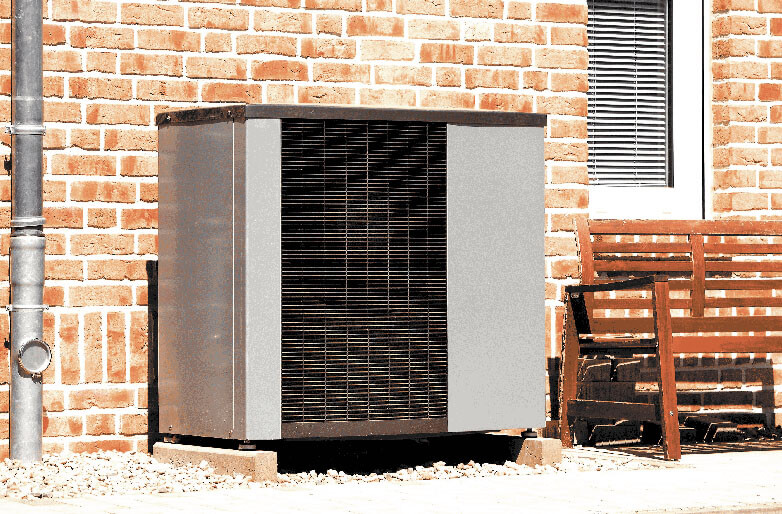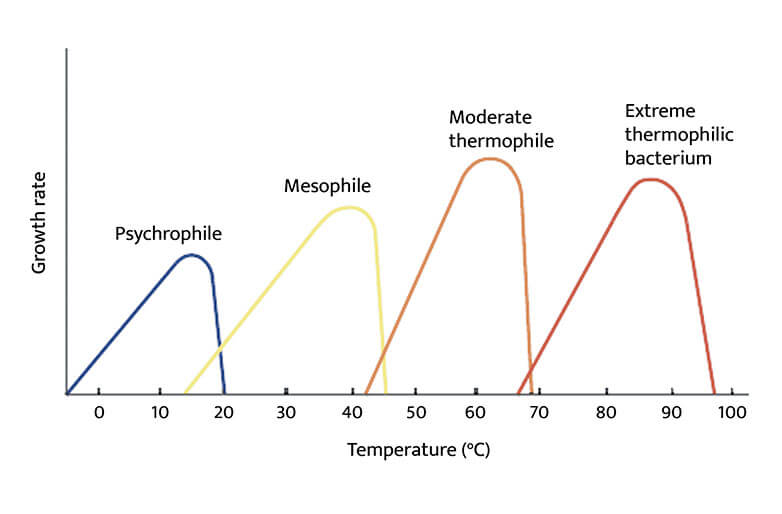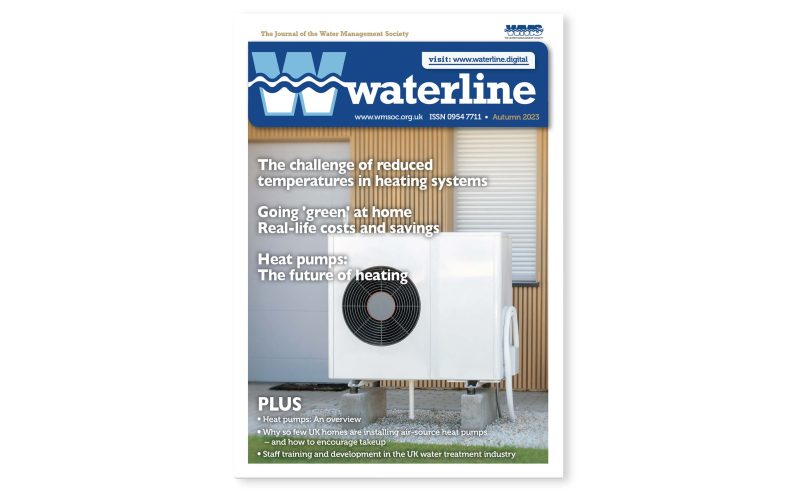As featured in Waterline Autumn 2023
The challenge of reduced temperatures in heating systems
By Chris Parsloe and Dr Pamela Simpson

The drive for building heating solutions with lower carbon dioxide emissions is likely to encourage engineers to adopt lower circulating water temperatures and flow rates. This may have implications for water treatment solutions in closed recirculating pipework systems. The trend will apply to small domestic systems in individual dwellings as well as to commercial office buildings and large heat networks where multiple dwellings are served from a central energy centre.
The main reason for this move is that the efficiencies of some low carbon heat sources improve when operated at reduced temperatures.
For example, gas condensing boilers achieve much higher efficiencies (more heat output per unit of gas burnt) when the flue gasses are allowed to condense, but this only happens when the boiler flow temperature is reduced to below 55°C.
Similarly, the heat pumps widely promoted for all building types are at their most efficient (able to deliver up to 4 times more heat energy than the electrical energy they consume) when operating at around 45°C. For higher temperatures, the efficiencies are likely to reduce significantly.
Allowing for a drop in temperature as the water passes through terminal devices such as radiators or under-floor heating, the entire return legs of recirculating heating systems may experience temperatures that are consistently in a range between 30°C and 45°C.
Reduced flow rates and the presence of large slow-moving pockets of water may also be a feature of these systems. Heat sources such as combined heat and power units may tend to generate heat at times when there isn’t much demand for it. To allow for this, designers usually incorporate large cylinders to store the heated water (i.e., thermal stores) that may not see much turnover of water for long periods. It may be difficult to get water treatment chemicals into these areas as the turnover of water in the cylinder will depend on the heat demand in the system.
Furthermore, ensuring circulation by means of a valve exercising regime (whereby control valves are driven open for 1 hour per day) may not be possible. In heat networks feeding heat interface units, the control valves are often selfacting valves that are located inside the units and are unlikely to be controlled from a building management system. Even if the valves could be held open for an hour each day, this could have a detrimental effect on the intended heat source sequencing controls negating their energy saving benefits.
For systems operating with this combination of medium range temperatures and poor circulation rates, bacterial proliferation could become an ongoing problem. Most mesophilic bacteria entering the systems via mains supply, multiply rapidly at temperatures between 15 to 50°C with their optimum growth usually between 20 to 45°C.
At these temperatures, bacteria numbers could double every 20 minutes and be distributed throughout the system. Wherever and whenever the flow rate reduces, the planktonic bacteria will settle and adhere to the pipe walls as sessile bacteria.
If Pseudomonas spp. are present, which is most likely, these will multiply rapidly and produce a protective polysaccharide layer known as a biofilm. Any passing bacteria and debris will become entangled in the sticky biofilm and a mixed, rapidly growing colony will form. Sulfate reducing bacteria (SRB) can establish on the pipe surfaces underneath the biofilm and, in anaerobic conditions, may rapidly multiply contributing to microbiologically influenced corrosion (MIC) of certain metal pipes, e.g. mild steel or thin-walled carbon steel. Corrosion of this type may cause pin hole leaks within only a few months.

Graph extracted from BG50/2021 courtesy of BSRIA
As well as causing a corrosion risk, a well-established biofilm can also result in reduced flow from the system pumps and reduced heat transfer at heat sources and terminal devices. This is because the biofilm layer creates a resistance to flow and also an effective thermal insulating layer on heat exchanger surfaces.
Under these circumstances, the water treatment specialist can no longer rely on the sterilising effect of 80°C flow temperatures to help control bacteria levels. On the contrary the temperature ranges being considered are more likely to encourage the proliferation of some types of bacteria causing much faster deterioration in microbial conditions if left unchecked.
Some modifications to the accepted approach may therefore need to be considered. One solution might be to adopt a particularly stringent biocide wash during the pre-commission cleaning process to achieve bacteria levels as close as possible to zero but certainly well within the normal limits set out in guides such as BSRIA BG29.
In operation, it becomes crucial that systems remain dosed with an appropriate biocide. Regular microbial monitoring and control will be required, and with greater frequency than for traditional systems. Since bacterial conditions can deteriorate rapidly in these circumstances, regular monthly sampling may be required rather than the typical 3 month checks commonly advised. It is easier and more cost effective to maintain microbial control rather than to try and clean up a system supporting an established biofilm.
The type of biocide used should be selected based on the system materials, temperatures and levels of bacterial contamination. Most biocides will work effectively at the temperature ranges specified for these systems. For long term protection of the systems, when bacteria levels are low, the use of a slow-acting biocide should be considered. However, if there are high numbers of bacteria and a suspected biofilm is present, the use of fast-acting biocides in conjunction with a biodispersant should be considered alongside the removal of disrupted biofilm through a filter mesh of not more than 0.5microns. Once the system has been brought back under control, the biocide should again be changed for a slow-acting biocide which will offer preservation of the systems water.
Nutrients in the circulating water should also be controlled as far as possible. The use of corrosion inhibitors that are resistant to bacteria may help.
Experience with these conditions is becoming more common so it is likely that other alternative solutions and approaches will be proposed. At this stage an awareness of the problems is key to understanding why some systems may be particularly prone to bacterial issues and what can be done to alleviate the problems.












